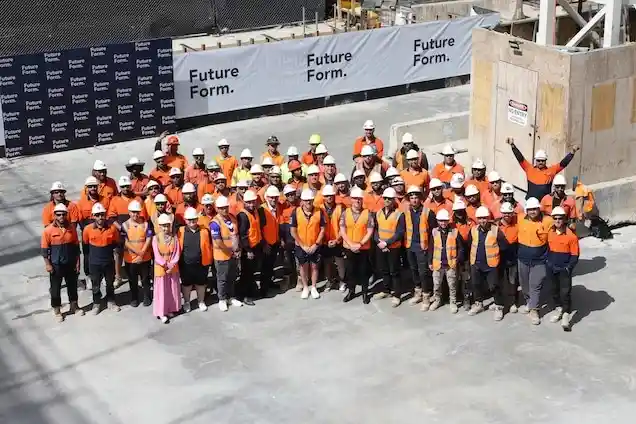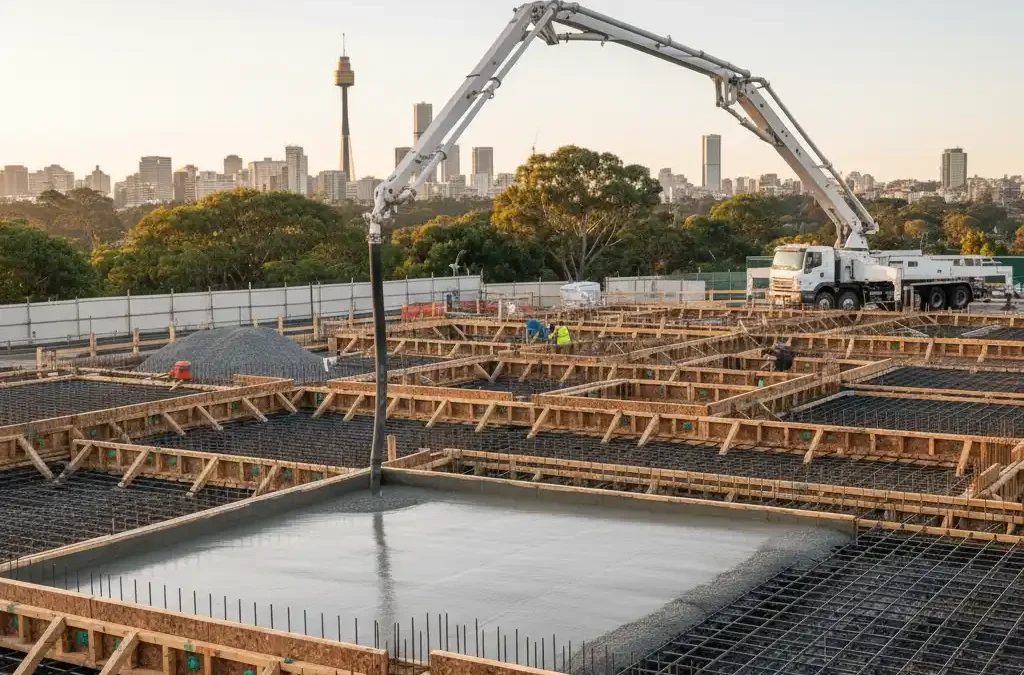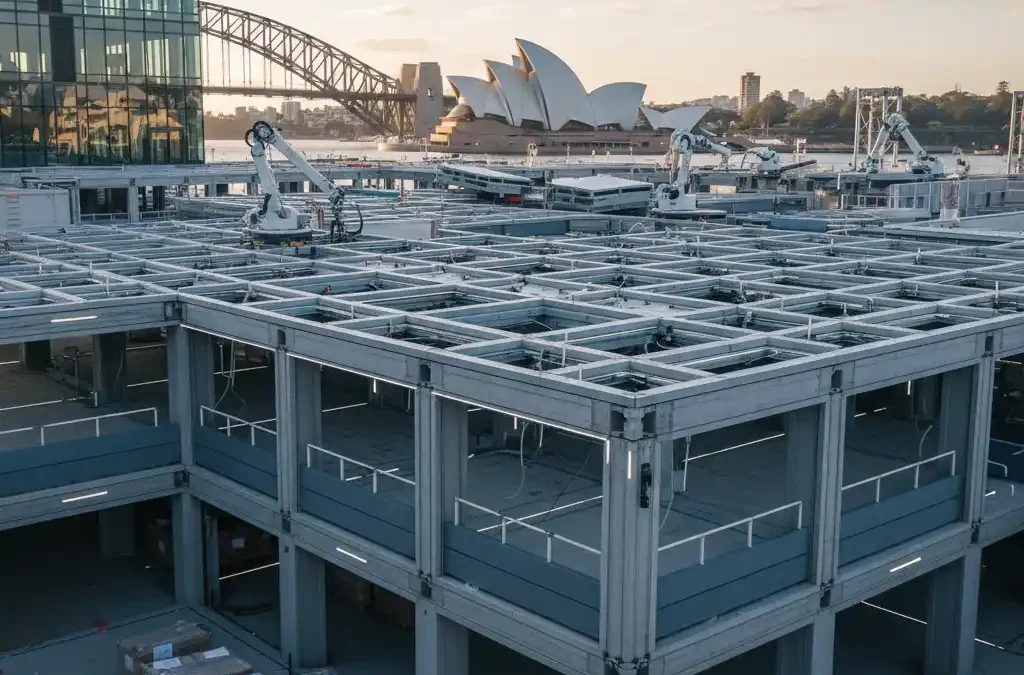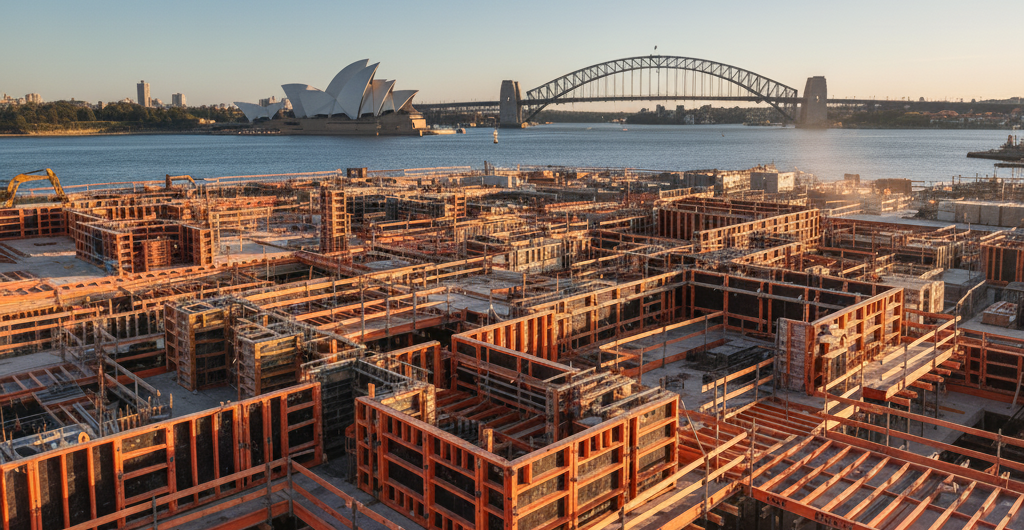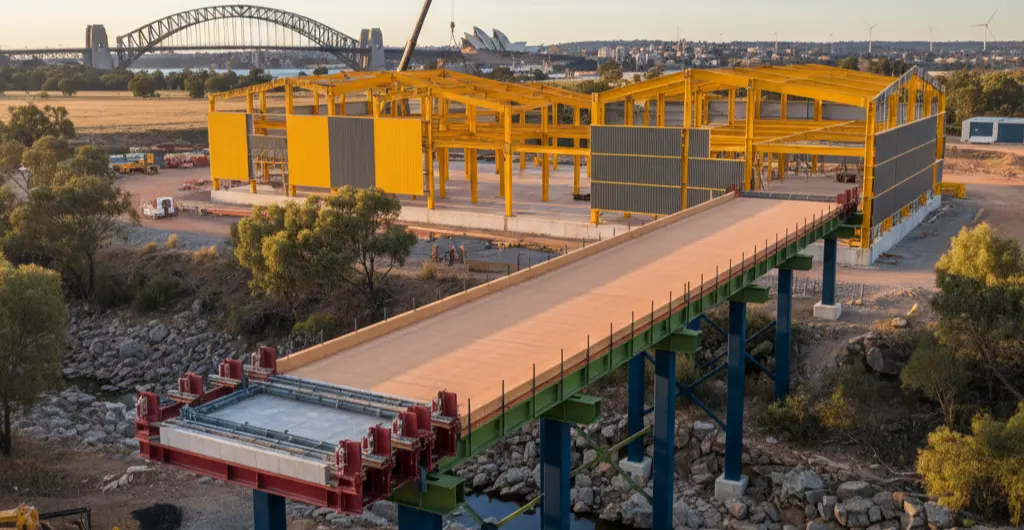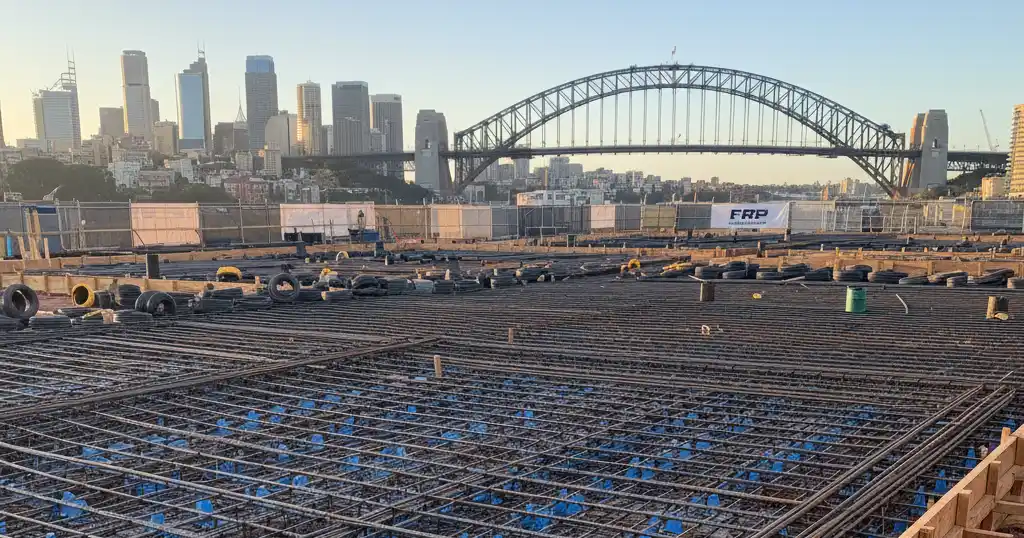
In the world of construction, numerous elements are constantly in change: plans to analyse, deadlines to meet, budgets to monitor, and risks to manage. However, despite all the strategic planning and architectural vision, there is one process that gradually determines whether a structure will endure the test of time: FRP—form, reo and pour. Within this process, steel fixing stands out as a vital component of every structural package, ensuring that the foundation of concrete structures is placed with precision and durability.
Steel fixing rarely grabs attention in discussions surrounding developments in construction. Formwork solutions and concreting techniques often take the spotlight in industry news, while reo and fixing quietly operate in the background. This frequently overlooked step is crucial in maintaining the integrity of the entire package. Even the highest-quality concrete formwork australia or the most innovative formwork solutions cannot reach their full potential without strong fixing.
Future Form has known this for a long time. For us, steel fixing is about more than just joining bars; it’s about protecting investments, creating confidence, and constructing long-lasting buildings.
Understanding FRP: form, reo and pour
FRP is a complete approach to concreting that integrates three crucial stages of delivery, making it more than just a construction word. For a project to be successful, every aspect is essential:
● Form offers the temporary or permanent moulds that keep concrete in position.
● Reo brings in reinforcement, usually steel, to provide the tensile strength that concrete alone does not have.
● Pouring involves placing and curing concrete, effectively combining the form and reinforcement into a single, solid structure.
Every step holds importance. When combined, they form a reliable structural package that developers, contractors, and clients can trust. This collaboration is what makes FRP a trusted foundation for ambitious projects. Steel fixing serves as the key connection between the formwork and the concrete pour, ensuring that the reinforcement is properly placed, allowing the concrete to function exactly as it should.
Why steel fixing matters in structural packages
While concrete is strong in compression, it is steel that delivers tensile reinforcement to prevent bending, stretching, and cracking. Steel fixing involves the precise positioning of reo, ensuring it fulfills its designed function effectively.
When executed properly, steel fixing ensures:
● Loads are distributed according to the original design requirements.
● Cracks are reduced and managed effectively.
● Reinforcement has the proper coverage, protecting it against corrosion.
● Concrete pours continue seamlessly, with steel cages and structures remaining perfectly in place.
When solutions fail, the consequences can be severe: safety risks, problems with concrete placement, costly rework, or, in the most extreme scenarios, structural failure. Expert steel fixing is more than just a job; it’s an important component in ensuring the success of any project.
Steel fixing and visionary development
Every development begins with an idea—a vision captured on paper, a concept that shapes the skyline, a new space designed for people to live and work. Turning those concepts into tangible outcomes demands more than visionary design; it requires a solid foundation.
Steel fixing may go unnoticed once the concrete hardens, yet it is the very element that allows developers to explore new possibilities. Innovative designs depend on precise installation, with reo positioned accurately to withstand both the weight of concrete and the passage of time. The steel fixers at Future Form understand this responsibility. Their work delivers the hidden strength that enables ambitious plans to succeed, giving clients confidence that the foundation of their growth is as strong as the vision that inspired it.
The risk landscape in concreting
The world of concreting is already filled with challenges—delays, budget overruns, safety concerns, and quality control issues. Each step of FRP presents unique challenges to navigate. For example, if formwork is not set up with precision, it may shift or collapse. Misplaced, improperly tied, or poorly covered reinforcement can create serious hazards. The concrete pour can also bring issues such as segregation, honeycombing, or pure curing if not carefully managed.
Steel fixing reduces many of these risks before the pour even begins. Strong reinforcement improves stability, prevents shifting under pressure, and ensures long-term strength. In this way, skilled fixers serve as an invisible safeguard, reducing weaknesses and protecting the entire framework.
Skilled fixing as a guarantee of safety
Finding the right partner, means finding a lasting commitment to quality. Each tie, every bend, and every reo placement is carried out with the understanding that accuracy is essential for both safety and investment protection.
An expert steel fixing team ensures compliance with engineering specifications, consistency across every project, and safety throughout the pouring process. This approach guarantees durability, protecting structures against cracks, corrosion, and environmental challenges for years to come. Developers and contractors must prioritise quality—proper fixing leads to safer worksites, stronger structures, and reduced long-term costs.
Future Form stands apart as an FRP contractor by seamlessly combining all three key components—form, reo, and pour, with steel fixing as the fundamental element. Future Form sees steel fixing not as a simple checkbox but as a core element of our commitment to every client.
Using FRP ensures that formwork, reinforcement, and concreting are perfectly aligned, resulting in a simpler and more efficient process from beginning to end. Our teams have years of real-world knowledge, guaranteeing accuracy even in the toughest site conditions. Attention to detail is essential, ensuring that each bar is checked and every tie is completed with precision. Beyond technical implementation, our collaborative approach builds trust among developers, suppliers, and contractors, ensuring our solutions align with the primary goals of every projects.
The result is a strong structural package that goes beyond strength—it represents consistency, compliance, and readiness for innovative development.
Steel fixing as innovation partner
In an industry that increasingly driven by digital design, prefabrication, and sustainable practices, it’s easy to focus on the latest tools and technologies. Yet, even the most advanced developments rely on a solid foundation. Steel fixing is that foundation of strength—a balance of innovative design and skilled craftsmanship, where the accuracy of digital tools and prefabricated elements comes to life through expert execution. Skilled problem-solvers interpret designs, adapat to site conditions, and ensure that creativity is realised in practice.
For Future Form, steel fixing goes beyond its role in FRP; it represents the essence of innovation. It ensures that ambitious architectural ideas are dependable, that technological advances result in real durability, and that every structural solution fulfills its promise of strength and safety. In the end, steel fixing is more than a hidden process—it is the solid foundation of construction, the craft that turns concepts into lasting structures, and the reason Future Form projects continue to build trust long after the concrete has set.
Concrete Institute of Australia. (2020). Concrete basics: A guide to concrete practice. Concrete Institute of Australia. Retrieved from: https://concreteinstitute.com.au
Ghosh, S. K. (2019). Reinforced concrete design: Principles and practice. CRC Press. Retrieved from: https://www.crcpress.com
Neville, A. M. (2012). Properties of concrete (5th ed.). Pearson Education. Retrieved from: https://www.pearson.com
Standards Australia. (2018). AS 3600: Concrete structures. Standards Australia. Retrieved from: https://www.standards.org.au
Warner, R. F., Rangan, B. V., Hall, A. S., & Faulkes, K. A. (2010). Reinforced concrete basics (2nd ed.). Pearson Education Australia. Retrieved from: https://www.pearson.com.au

